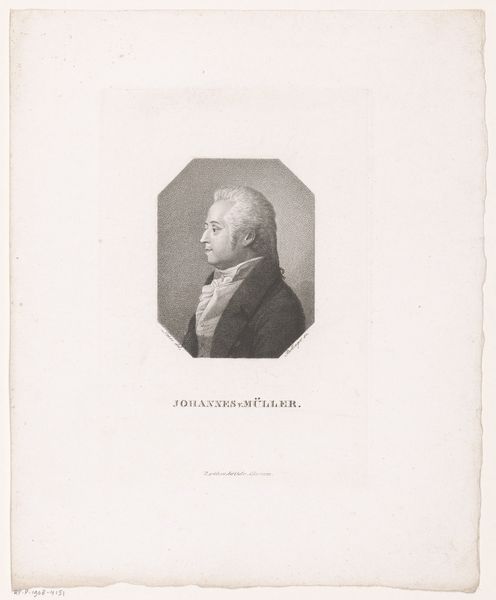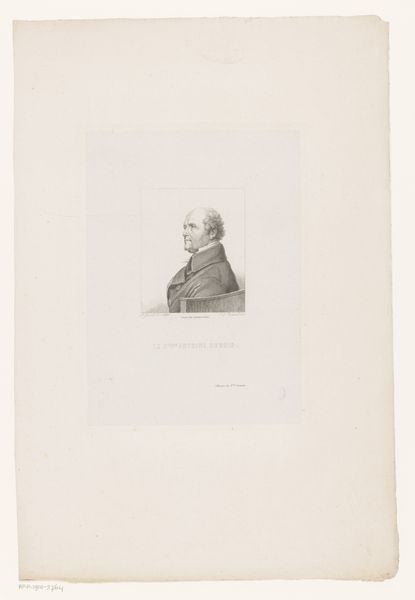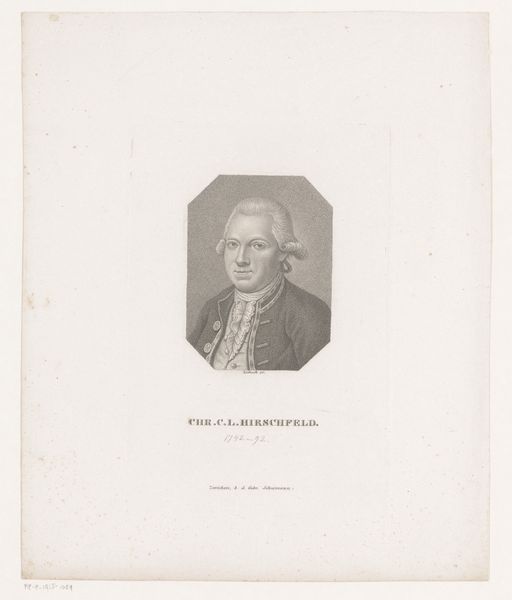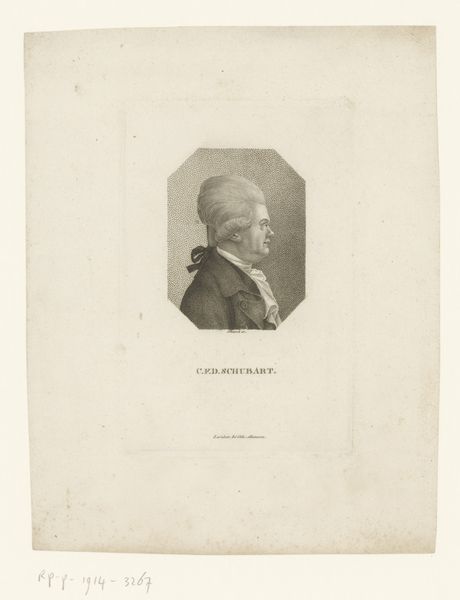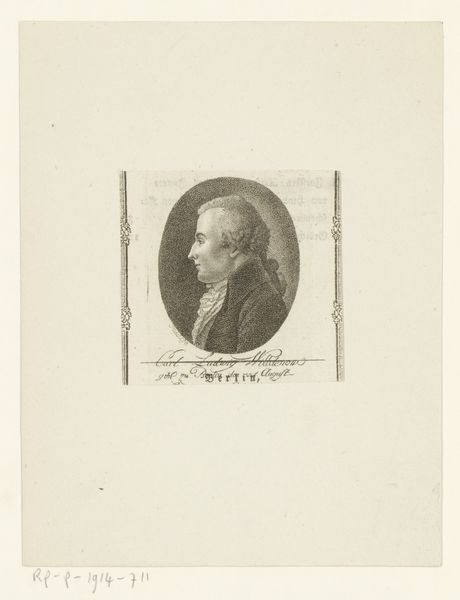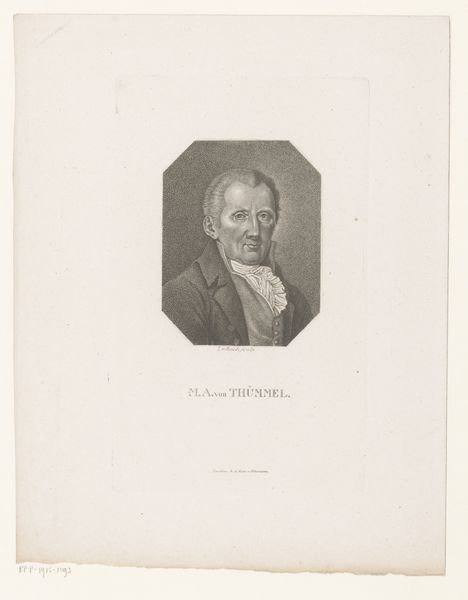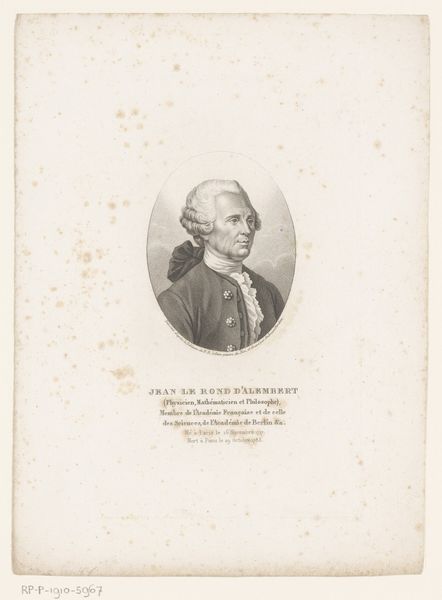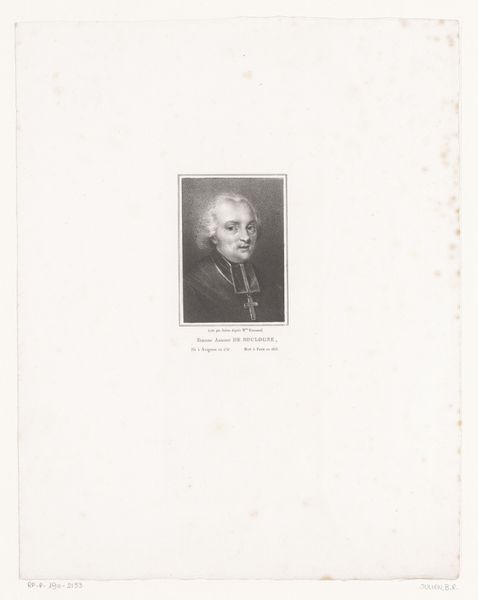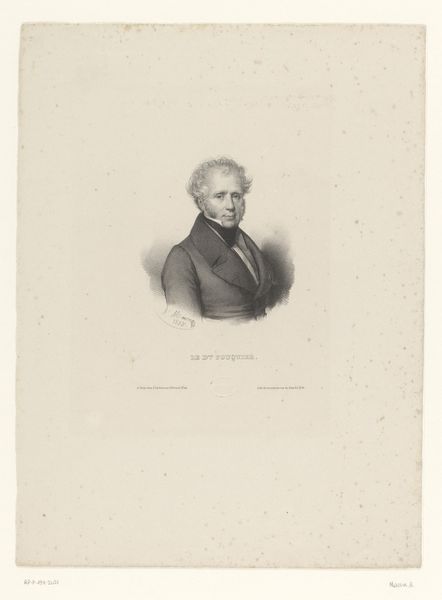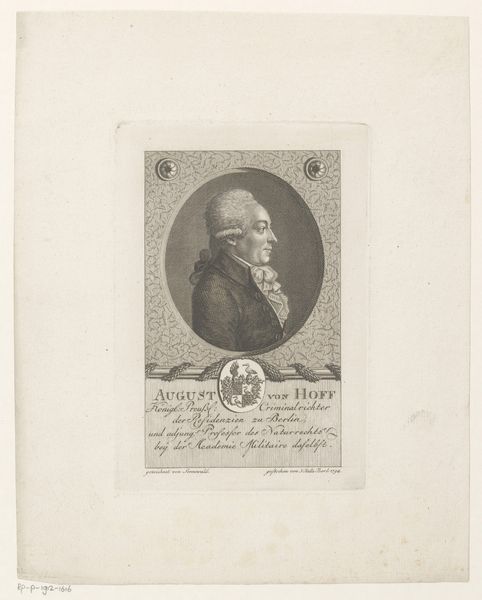
paper, engraving
#
portrait
#
neoclacissism
#
paper
#
engraving
Dimensions: height 186 mm, width 118 mm
Copyright: Rijks Museum: Open Domain
Curator: Today, we're looking at a piece titled "Portret van Franz Volkmar Reinhard," dating somewhere between 1818 and 1832. It is crafted from paper, through an engraving technique. What strikes you first about it? Editor: The stillness is overwhelming. It’s very austere. I suppose that’s fitting given the man’s attire, but his expression almost verges on severe, doesn't it? I also wonder about the artist’s decision to depict him in profile. Curator: Precisely. Profile portraits such as these were a classical, neoclassical affectation, a means by which the sitter, or in this case the engraver and the publisher, alluded to civic virtue and Roman republicanism. The simplicity echoes that ethos. Editor: The sharp, precise lines of the engraving contribute to that severe effect as well. There’s little room for nuance or warmth. It almost flattens him, paradoxically, even as it attempts to ennoble him. What’s also interesting to me is his position as theologian and a professor; I can imagine that context giving some authority to this man as an established pillar within a religious or academic system. Curator: That's very insightful. Engravings like this often served a propagandistic purpose, cementing reputations and projecting an image of stability, particularly after the revolutionary upheavals that swept through Europe. Think about how prints facilitated wider distribution of specific imagery as tools to affirm political and intellectual leadership within society. Editor: Which raises interesting questions about power, visibility and representation. Who gets portrayed, and what narrative are these images constructing and perpetuating? I think considering who produced, consumed, and controlled this visual rhetoric helps us understand more than just aesthetics. Curator: Exactly! By looking at who commissioned the engraving, who distributed it, and who the intended audience was, we can begin to understand the social and political forces at play. How did the image serve them, and what kind of image of Reinhard were they aiming to craft? Editor: A very powerful reminder of how images participate in larger historical conversations. Thanks for unpacking that for me. Curator: A pleasure, always! The surface appearance may be static, but digging beneath to understand the forces involved transforms one's viewing of it completely.
Comments
No comments
Be the first to comment and join the conversation on the ultimate creative platform.
